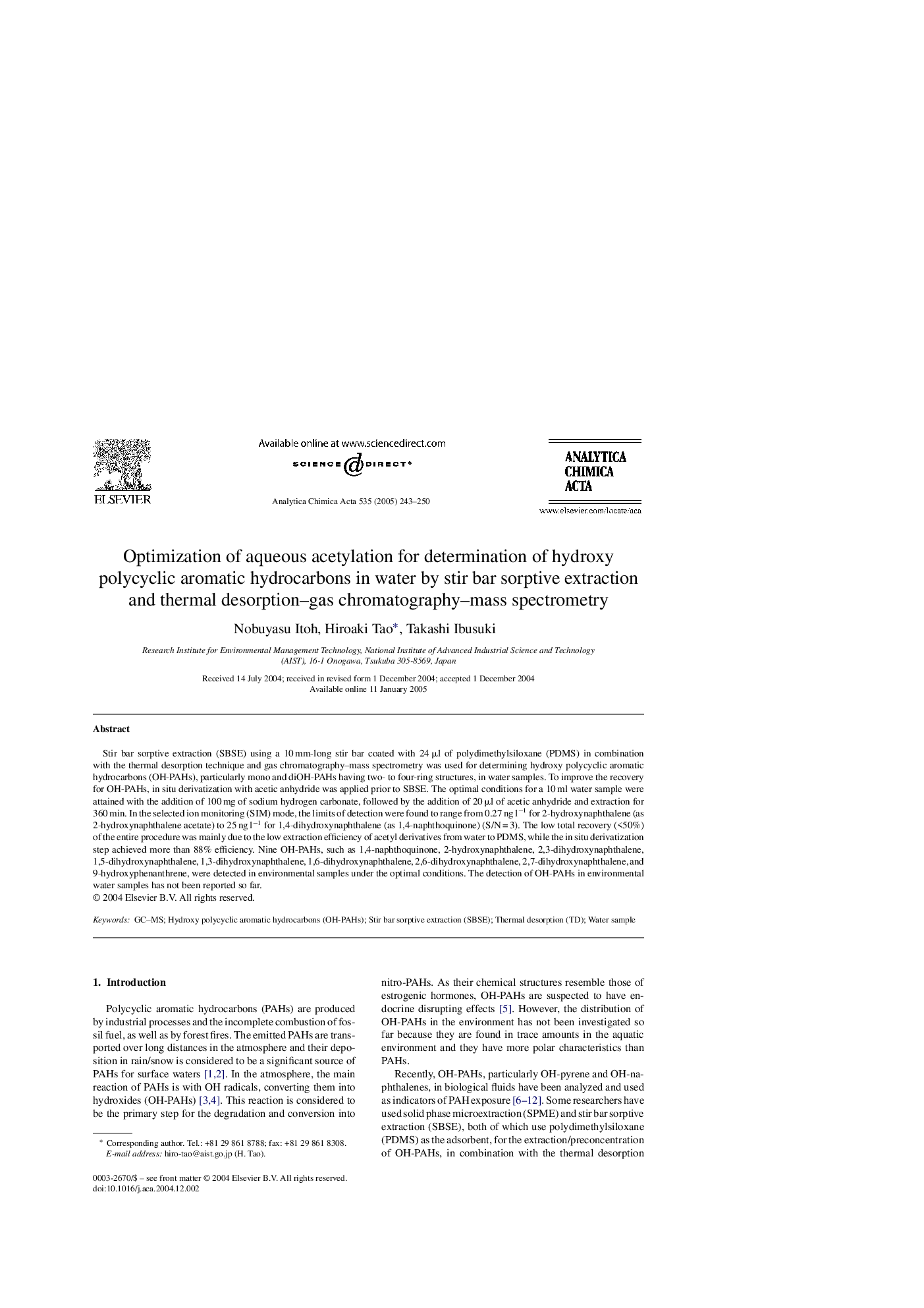| Article ID | Journal | Published Year | Pages | File Type |
|---|---|---|---|---|
| 9743887 | Analytica Chimica Acta | 2005 | 8 Pages |
Abstract
Stir bar sorptive extraction (SBSE) using a 10 mm-long stir bar coated with 24 μl of polydimethylsiloxane (PDMS) in combination with the thermal desorption technique and gas chromatography-mass spectrometry was used for determining hydroxy polycyclic aromatic hydrocarbons (OH-PAHs), particularly mono and diOH-PAHs having two- to four-ring structures, in water samples. To improve the recovery for OH-PAHs, in situ derivatization with acetic anhydride was applied prior to SBSE. The optimal conditions for a 10 ml water sample were attained with the addition of 100 mg of sodium hydrogen carbonate, followed by the addition of 20 μl of acetic anhydride and extraction for 360 min. In the selected ion monitoring (SIM) mode, the limits of detection were found to range from 0.27 ng lâ1 for 2-hydroxynaphthalene (as 2-hydroxynaphthalene acetate) to 25 ng lâ1 for 1,4-dihydroxynaphthalene (as 1,4-naphthoquinone) (S/N = 3). The low total recovery (<50%) of the entire procedure was mainly due to the low extraction efficiency of acetyl derivatives from water to PDMS, while the in situ derivatization step achieved more than 88% efficiency. Nine OH-PAHs, such as 1,4-naphthoquinone, 2-hydroxynaphthalene, 2,3-dihydroxynaphthalene, 1,5-dihydroxynaphthalene, 1,3-dihydroxynaphthalene, 1,6-dihydroxynaphthalene, 2,6-dihydroxynaphthalene, 2,7-dihydroxynaphthalene, and 9-hydroxyphenanthrene, were detected in environmental samples under the optimal conditions. The detection of OH-PAHs in environmental water samples has not been reported so far.
Related Topics
Physical Sciences and Engineering
Chemistry
Analytical Chemistry
Authors
Nobuyasu Itoh, Hiroaki Tao, Takashi Ibusuki,
